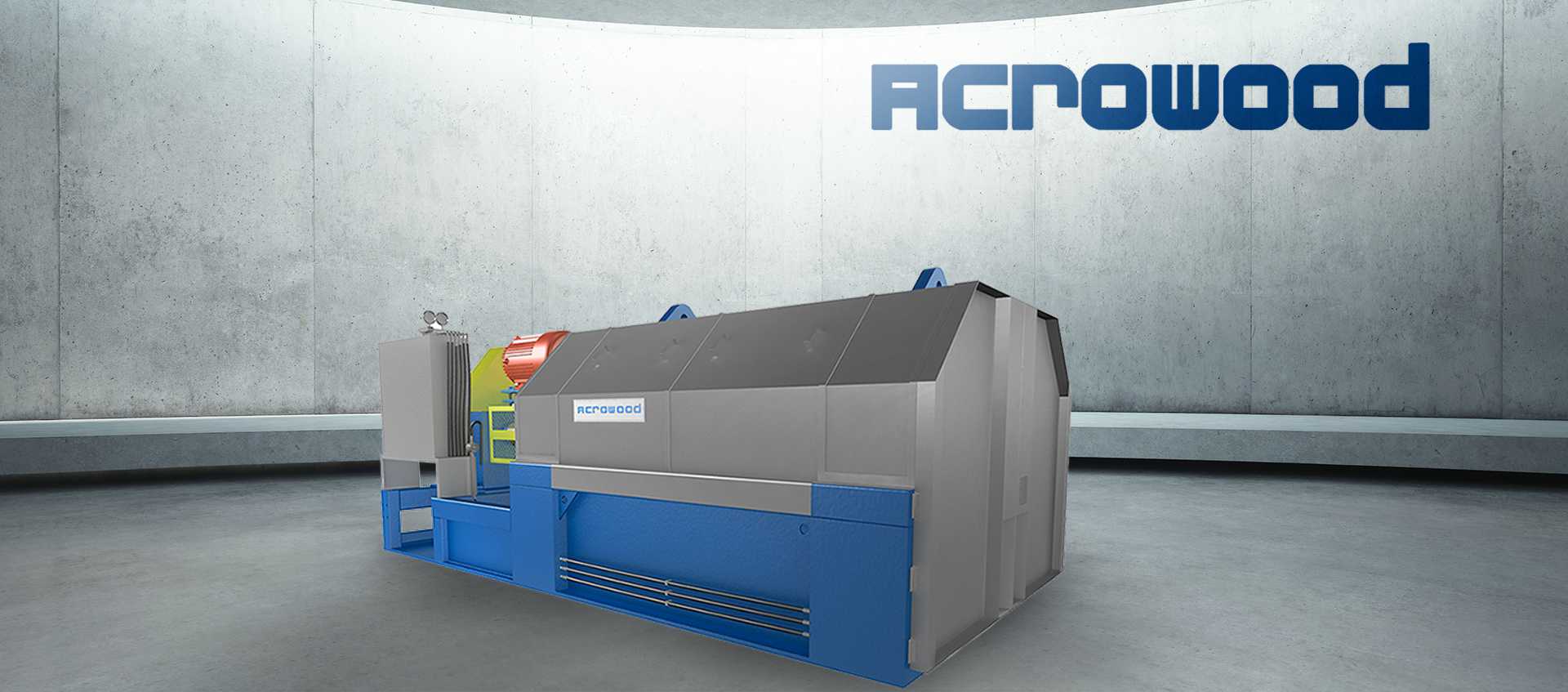CHIPPING
Chip Cracker
The Chip Cracker ensures wood is not wasted.
Acrowood Chip Cracker
The Acrowood Chip Cracker processes overthick chips while minimizing fiber degradation, pins, and fines generation, and without damage to accept chips to ensuring higher pulp yield from overthick chips. The Chip Cracker processes high volumes of wood chips fed between the two large rolls, gently cracking them for chemical pulping operations.
Chip Cracker Features
- High performance cracking of overthick chips for liquor penetration in pulping applications
- Reliable, long-lasting rolls have keyed, replaceable segments formed of cast stainless steel
- Trouble free operation with minimal maintenance
- Very few pins, fines or damaged chips generated with low-profile knurl pattern
- Less power requirements with pivoting arm design: weight of the rolls provide the cracking force and reduces hydraulic pressure needs
- A single motor drives both rolls through twin, foot-mounted gear boxes and heavy-duty universal joint drive lines
- Low maintenance man hours
- Less susceptible to damage from contaminants
- Roll shaft segments easily accessible
- Easy roll removal and bearing replacement
- Roll shaft assemblies accessible through side frames
- Long-life stainless steel segments on a square shaft
- Minimal hydraulic requirements
- Textured and pivoting rolls for gentle cracking
- Quiet belt drive
Watch this video of the Acrowood Chip Cracker in motion, the Chip Cracker machine can handle high volumes of wood chips as they are fed between the two large rolls and gently cracked and compressed for making usable chips and fiber for your application. The Chip Cracker is used by Chip Plants, OSB Plants, Pellet Plants, Pulp Mills, Sawmills and Shaving Mills worldwide.
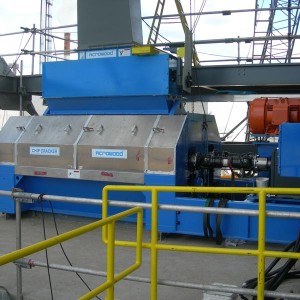
Gentle Consistent Cracking
The Acrowood Chip Cracker is a superior machine for gently cracking chips without fissuring fibers.
Its unique rolls gently crack each chip, without fracturing or puncturing them. The diamond tips of one roll gently mesh with the valleys of the other, ensuring each wood chip is properly cracked regardless of how it enters the nip.
The roll segments are mode of hardened stainless steel to resist corrosion and abrasive wear for maximum service life. The rolls consist of a 24″ square central shaft and four, 12″ wide roll covering segments. Wide raised key sections are machined into the square shaft body to prevent the segments from moving, and eliminating bolt stress.
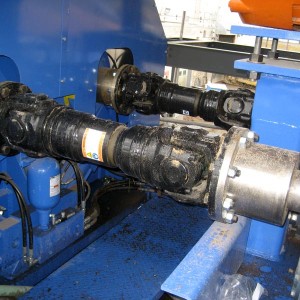
Independent Reaction
A single motor drives two foot-mounted gear reducers. A high-strength, universal joint driveline connects each reducer to a cracking roll, allowing the rolls to retract during start-up and when incompressible pieces pass between them. The patented swing arms allow the rolls to independently react to hard pieces, halving response time and limiting rol surface damage. The heavy arms are designed to allow simple maintenance access to bearings and roll segments.
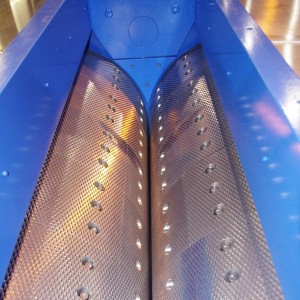
Smart Design
The texture knurl pattern is machined into the stainless steel segments.
The Acrowood Chip Cracker’s patented design allows for immediate response to the individual characteristics of a mill’s chips. The weight of the rolls alone contributes to the cracking process. Since the nips pressure and spacing are easily adjustable, control of the cracking process minimizes chip damage when raw materials vary. Nip spacing and pressure are unique for each species and cracking objective.
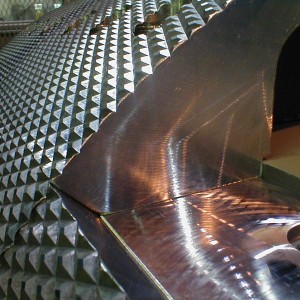
Cracker Segements
Cracker segments are formed from heavy, stainless steel castings that are machined to fit a stepped, square central shaft. Segment surfaces are precision machined to provide proper chip cracking with minimal damage or fines generation.

Chip Cracker Hydraulics
Because the hydraulics are integral with the drive frame, no separate hydraulic island is required, and the belt drive is engineered for quiet performance.
Long-life, easy maintenance , and superior chip quality are all to be found with the Acrowood Chip Cracker.
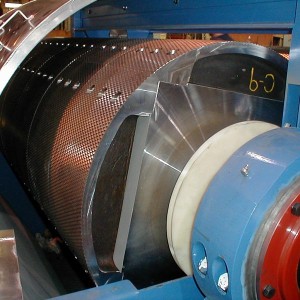
Heavy Universal Joint
Heavy, universal joint drive lines power both rolls from a single motor and twin, matched ratio gear boxes.
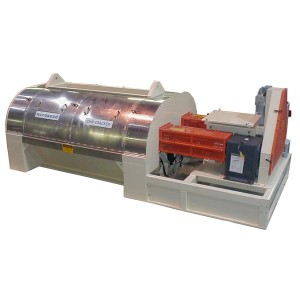
Maintenance Highlights of the Chip Cracker
- Rolls shaft segments easily accessible
- Easy roll removal and bearing replacement
- Roll shaft assemblies accessible through side frame
- Long-life stainless steel segments on a square shaft
- Minimal hydraulic requirements
- Textured and pivoting rolls for gentle cracking
- Quiet belt drive

Steel Arm Support
Massive steel arms support both cracker rolls from a single pivot point at each end of the machine.
| Model | Length (in) | Height (in) | Width (in) | Motor (HP) | Weight (tons) | Capacity (uph) |
|---|---|---|---|---|---|---|
| 3648 | 170 | 78 | 96 | 75 | 20 | 20 |
| 3672 | 185 | 77 | 94 | 100 | 14.5 | 30 |
| 3696 | 218 | 78 | 94 | 150 | 29 | 40 |
| Model | Length (in) | Height (in) | Width (in) | Motor (HP) | Weight (tons) | Capacity (uph) |
|---|---|---|---|---|---|---|
| 3648 | 4.32 | 1.98 | 2.44 | 55 | 18.2 | 110 |
| 3672 | 4.70 | 1.96 | 2.39 | 75 | 13.2 | 170 |
| 3696 | 5.54 | 1.98 | 2.39 | 110 | 26.4 | 225 |
The Chip Cracker brochure
Request the chip cracker machine brochure in PDF format for easy reading.
Case Study: Chip Thickness Screening and Chip Quality in the Pulp Mill
Fines, Pins, Accepts and Overthick chips. Chip Crackers are instrumental when it comes to reforming chips with compression for achieving acceptable chip thickness.
Case Study: Overthick Chip Chip Treatment
A textured pattern on the rolls of the Chip Cracker is used to insure that the chip will be fissured regardless of the orientation it has when it enters the nip. Theoretically, a chip that is compressed by the rolls where the fibers are parallel with the nip should be squeezed in such a way that the fibers are “naturally separated” by the action of the rolls.
Case Study: Pulping System Sensitivity to Chip Quality
The preferred accepts would be less than the arbitrary maximum of 8 mm but as close to it as possible (shifted to the large end of the Accepts distribution). Overs should be processed through Cracking or Slicing to pulp like Accept chips.
View the Acrowood Corporate Video
Over a century of experience engineering equipment and machinery for pulp and paper, sawmill, panel board and biomass industries.

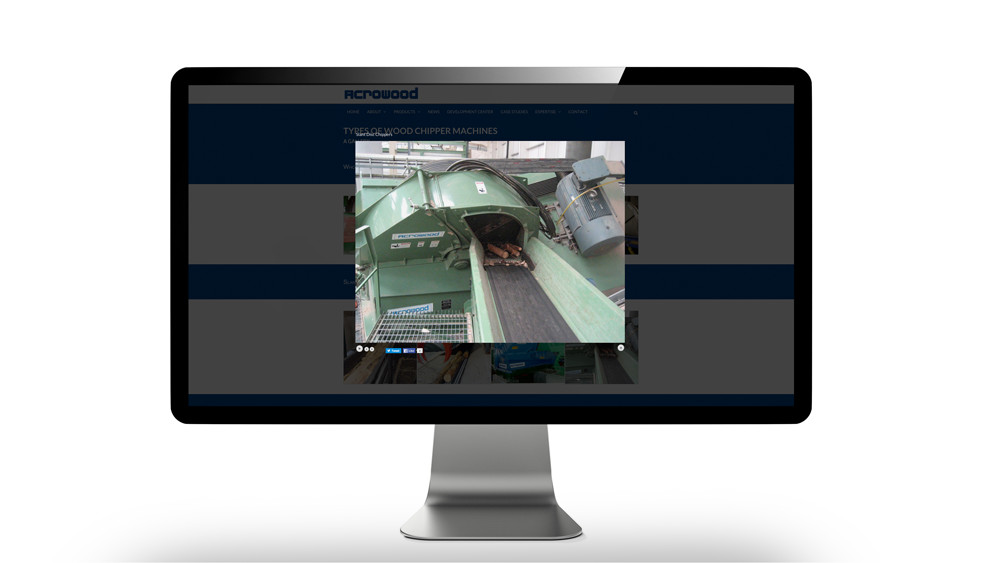
View Acrowood machinery installations at sawmills, pulp and paper mills, panel board mills and biomass facilities all around the world
View the gallery of chipping, cracking and slicing machines, chip screening & material distribution machines, and rotary & batch debarker machines.

